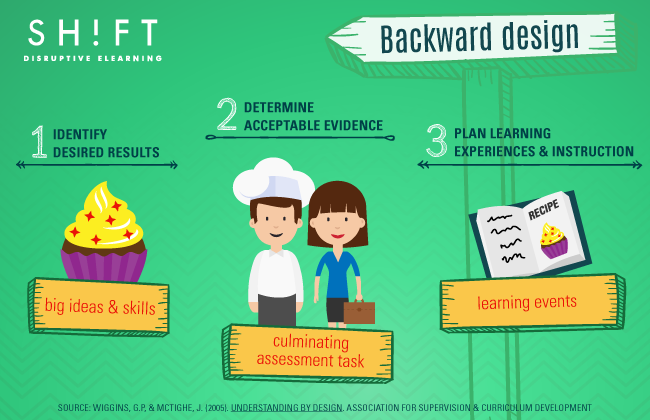BACKWARDS DESIGN TO COLLECT AND USE DATA
I remember I first heard the word "backward design" around 2009 in the context of "Teaching for Understanding" and "Understanding by Design- UbD". Below a good video summarising UbD by Grantt Wiggins.
Teachers devote time and spend a lot of energy planning their lessons and this is usually undervalued by school administrators and parents. Right now, within the context of COVID-19, some if not most parents openly and awfully criticise the Ministry of Education and teachers' attempts to provide remote teaching. The negative comments exist because there are people (teachers and institutions) actually "designing" "experimenting" "giving" solutions to a complex situation. So, I think that as a society we'd rather have people DOING than people DOING NOTHING.
However; when planning a lesson (whatever its form), it is crucial to start by "the end". That is to first think and set "overarching goals and measuring it with a specific assignment or task" (US Department of State, Teacher's corner) or as UbD states, these are the stages for planning:
- Stage 1: Identify desired results
- Stage 2: Determine acceptable evidence
- Stage 3: Plan learning experiences/ activities and instruction
What some teachers may usually do is to gather activities -"fun" activities- from here and there and start their planing by trying to fit in these in their lessons. This results in not seeing learning progress in students, especially in English Language Teaching. On the other hand, planning "backwards" helps us guarantee that the activities planned will help students meet the goal.
"If your students struggle meeting a goal, change the activities, do not change the goal."
So, as teachers we should question ourselves if we really set a learning goal before actually planning the activities.
SUMMATIVE ASSESSMENT ACTIVITIES
"Authentic Assessment" is the protagonist of everything said. Find specific examples here: Activities. Also find examples, benefits and challenges of assessment in ELT by clicking in the resource mentioned below by Oxford University Press.
I strongly believe that the Ministry of Education and communities of practice can help teachers by providing more guidance on how to construct evidence that can mobilise the all the skills, content and attitudes a competence has and on how to construct assessment tools to go with it. This year the Ministry has been using the following video to see the importance of setting criteria when assessing students. This summarises well how backwards design and assessment are the two sides of the same coin.
COLLECT AND USE DATA
Formative assessment helps the student and teacher recognise areas of strengths and weaknesses. A student who knows how to self-assess his/her learning, will be responsible for it. Similarly, a teacher who is constantly aware of what happens in his classroom and to their students, can assist (small group support) and re-plan to help students reach their learning goals. Some techniques to collect data are:
Some techniques to collect data are:- Anecdotal notes
- Check-lists
- Exit tickets
- Student self-assessment through response cards, signals
- Peer assessment (Click here to see a Video on how this works in a classroom)
- Here you will find articles on backwards design, summative and formative assessment activities: Teacher's corner: Collecting and Using Data: Teacher's corner
- Here Oxford University Press presents "Effective feedback: the key to successful assessment for learning"


No comments:
Post a Comment